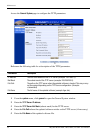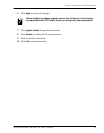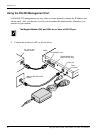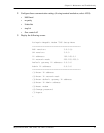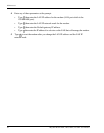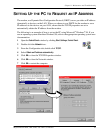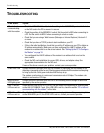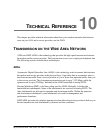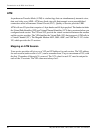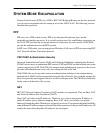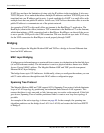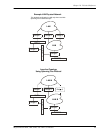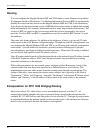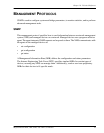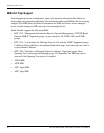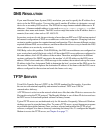
Transmission on the Wide Area Network
86 Megabit Modem 400F, 500L, 600F, and 700F User Manual
ATM
Asynchronous Transfer Mode (ATM) is a technology that can simultaneously transmit voice,
data, and video over ADSL. ATM uses fixed-size cells that transmit over a preestablished
connection called a Permanent Virtual Circuit (PVC). Quality of Service provides UBR.
ATM cells are 53 bytes that comprise a 5-byte header and 48-byte payload. The header includes
the Virtual Path Identifier (VPI) and Virtual Channel Identifier (VCI) that you entered when you
configured each session. The VPI and VCI provide the virtual connection between the modem
and the service provider. The VPI identifies the Virtual Path (VP) that transports ATM cells in
a Virtual Channel (VC). The Megabit Modem 400F, 500L, 600F, and 700F has 32 VCs in the
VP, which provides the 32 sessions.
Mapping an ATM Session
Your service provider will give you a VCI and VPI address for each session. The VCI address
for each session (each session is a VC) can be a number from 32 up to a maximum of 255, with
the first 32 numbers (0 through 31) reserved. The VCI value for each VC must be unique for
each of the 32 sessions. The VPI value must always be 0.



